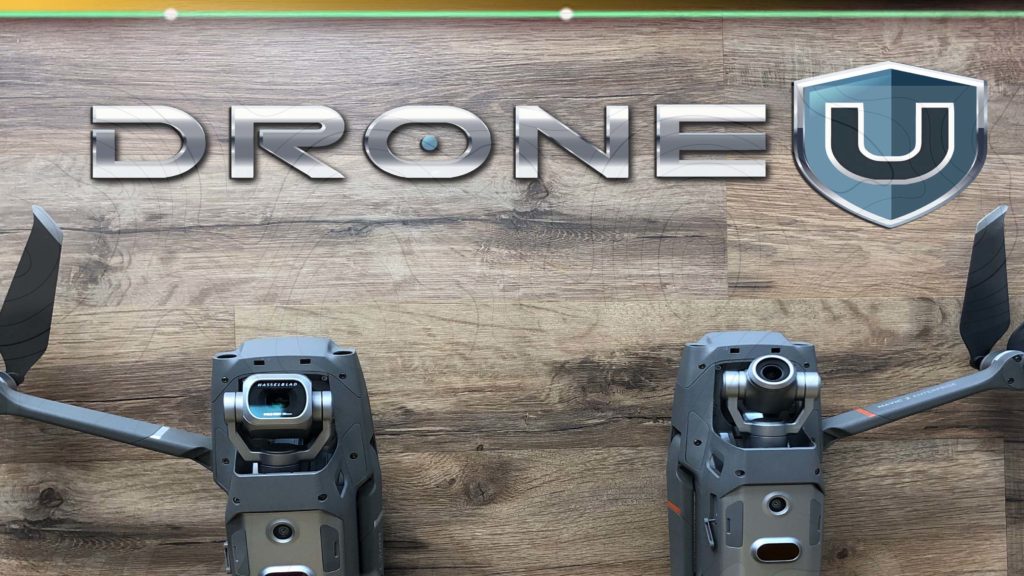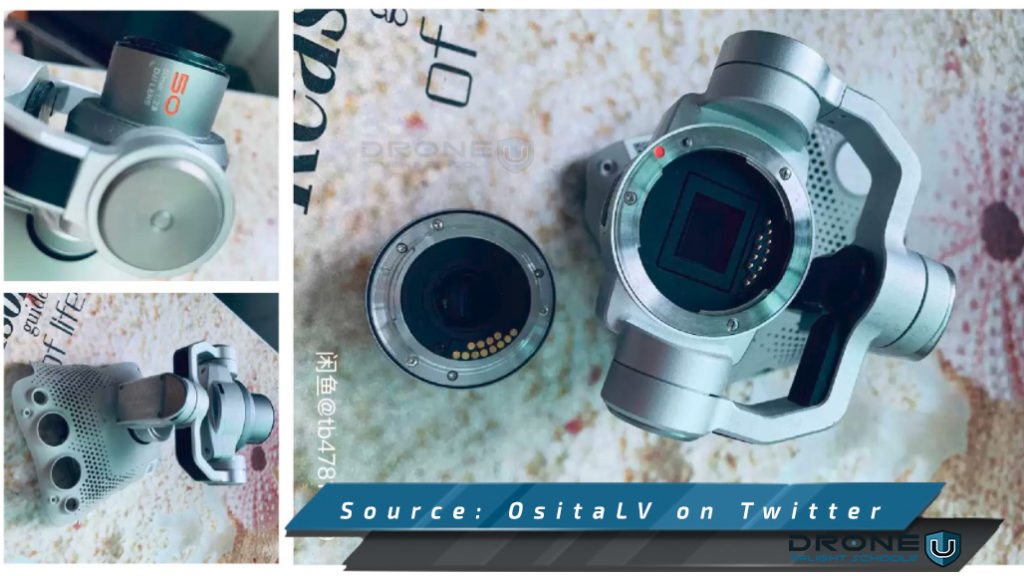Advance features like obstacle avoidance, follow me and mapping are just a short list of the few autonomous features the drone pilots wish to see from the DJI Mavic 3.
The drone community wants a host of features from the DJI Mavic 3. Even DJI has increased expectations with the recent launch of the Mavic Air 2. By increasing the megapixels on such a small sensor, DJI must have large plans for the summer release of the Mavic 3 Pro.
Drone U Flight Crew expects to see multiple versions of the Mavic 3. We expect to see a larger Hasselblad sensor on the pro model and a variable zoom with increased megapixels on another model. DJI has vast expectations to fill if they plan to continue selling the mavic series of drones.
Competition has been heating up, leapfrogging DJI.
With the release of the Skydio 2 late last year, obstacle avoidance had a whole new definition. This was the first drone that I truly trusted to fly itself. While that was a flawed statement at the time, the drone can navigate a forest autonomously. DJI had nothing that could compare to this drone at the time. We’re expecting to see DJI release a new Active Track 4.0 that will marry the new features of active track 3.0 with a skydio-like feature.
If a skydio loses its visual tracking of a user, it will switch to GPS location and re-follow the user. The skydio requires the user to be controlling the drone through the Wand. Frankly, I’ve been having a lot of fun with the skydio and the wand myself. Now while I love follow me features, this doesn’t help me out as a commerical pilot or really even a filmmaker.
Commercial features in a portable Mavic 3 Pro?
As a commercial drone pilot, I’d love to see the Mavic 3 offer a longer flight time, hotswappable camera payloads. Drone pilots would also love to see the mavic have a better camera sensor and shutter. If DJI would just remove the linear rolling shutter from the mavic line and provide a higher end shutter. With a “global shutter,” (a vague term used to describe an electronic or mechanical shutter) that reads all of the “light” at one time. These global shutters allow for faster acquisition and processing of drone maps.
For commercial drone mappers, this feature not only saves time on acquiring images for drone mapping. But it also saves time for processing of these same orthomosaics and drone maps.
Expected leaded features of the Mavic 3 Pro?
Thanks to our friend on twitter, our expectations continue to rise from DJI. We never saw the launch of watch feature or other various features with the Mavic Air 2. Thus we expect to see these features released with the Mavic 3 this summer.
Mavic 3 Features Leaked:
- DJI Watch: similar to Skydio’s Wand control system, the watch looks like it will use GPS to allow drones to “refollow” the user once the user has been lost with visual avoidance.
2. Active Track 4.0: Using the watch, once the drone is lost from the user, it will regain tracking with APAS. We expect this active track to be able to avoid objects at a speed we have never seen before. While speed isn’t everything, it sure is important when mountain biking or wakesurfing. Also we expect this system to smoothly correct its flight movements much like the Skydio drone.
3. Variable Zoom 1″ Hasseblad Camera? While the variable zoom would be an awesome feature, it would eliminate the drone mapping potential. We hope the Mavic comes in two models, one with a fixed lens for drone mapping. One model that serves the creative crowd with a variable zoom lens. Or lets have some fun DJI and make the Mavic 3 have hot-swappable camera payloads. Since the release of the Autel Evo 2, we expect DJI to rise to the occasion.
Camera features and specifications expected from DJI
When DJI launched the 48mp DJI Mavic Air 2, we expect to see the same pixel doubling feature on the Mavic 3 pro. Matched with a larger Hasselblad sensor, drone pilots could see a serious upgrade. What if DJI launched a sensor that offered 43 Mp from a larger sensor? Recently leaked, this newer sensor from Sony would be a powerhouse drone pilots could only dream of. Why?
- 43Mp Sensor with Global Shutter for drone mapping
- True 8k Video with large array of frame rates
- Larger color gamut and bit rates
- Potential Variable zoom (hopefully this would be a secondary model… again you can’t map with variable zoom lens)
Enterprise Features Drone Pilots would Love.
DJI would be doing the world a favor if they continue to offer the enterprise crowd with a small foldable drone. The DJI Mavic 3 pro could offer some serious improvements to aid in delivering more bang for the buck. The list of features below showcases how the DJI mavic could potentially overtake a phantom.
- DUAL IMU: Drone pilots always need a backup sensor. Like other enterprise drones, this should be standard. Didn’t we learn our lesson from Boeing and the 737 Max?
- DUAL Compasses or RTK Compass: True RTK, meaning a drone that can gather NTRIP corrections in real time. And then paste that information to the EXIF portion of the image. With true RTK, not only can we fly more precisely, we can also map more precisely. A small foldable drone with RTK capability would unlock mapping in many parts of the world.
- Attitude Mode: Commercial drone pilots need a drone that will allow the pilot to be in total control. With magnetic interference, or wifi, or multi-path interference… flight can go hay wire, and rather quickly. Drone pilots need DJI to implement attitude mode, a true sensor deprived flight mode. Why? Well don’t you want to stop a flyaway?
- Local Only Mode: Drone that doesn’t connect to the internet.
Expect to see Remote ID (Not the good kind) Built-in to the Mavic 3
The FAA has supposedly read 53,000 comments, thought critically and rejected most information proposed by practical drone pilots. We expect the rabit hole to extend deeper with the release of this drone. While we expect to see ADS-B into the Mavic 3, we also expect this drone to have cellular RID.
Of course, Drone U is not supporting cellular based or “network” remote ID. The government is worried about Chinese drones and parts. Most security experts know, if the drone is controlled without an internet enabled device, the security issue is solved.
So why does the FAA want to connect all drones to the internet?
Why does the FAA push for Network ID when most of our Drones already comply with broadcast ID?
IDK, i rest my case….
What do you want to see in the new Mavic 3?
Thanks for reading and supporting our work,
Paul Aitken, Call sign “TaitkenFlight.”








Add Your Comment